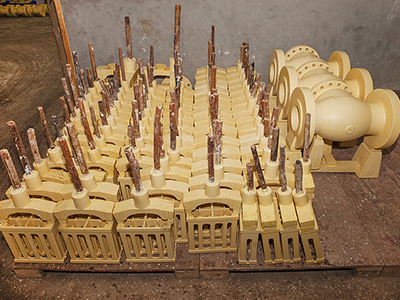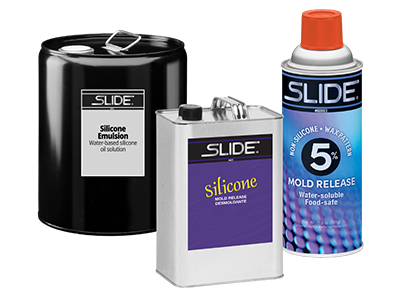
Also known as lost wax casting, investment wax casting is an important metal molding process that is widely used to produce complex parts with a high degree of accuracy and precision that would be difficult or otherwise impossible to achieve with other manufacturing techniques.
Investment wax casting is ideal for small to medium-sized production runs of medical equipment, firearm components, gears, and jewelry made from a wide range of metals including steel, aluminum, bronze, and titanium.
From initial concept to the final production, this blog explores the investment wax casting process, its limitations, and how products from SLIDE can help.
Step 1: Replica Patterns
The first step in investment casting is to create replica patterns of the parts that will be cast. This can be accomplished with a range of materials, such as wax or plastic, and is typically generated utilizing injection dies. Many characteristics of investment wax casting are dependent on these dies, including smooth surfaces and specific detailing. Each segment requires a separate configuration that will then be assembled to form the final product.
Slide’s fast-acting Silicone Mold Release formula makes this procedure more efficient. This heavy-duty solution can be sprayed onto the dye, allowing the mold to quickly disengage. Additionally, NEXGEN removes buildup in metal molds and Mold Shield prevents them from rusting between runs.
Step 2: The Sprue
Step two involves assembling the wax to a feed system called a sprue. The sprue not only holds the wax patterns but also forms a sufficient pathway through which metal can flow. This new group of attached patterns is called a tree. The structured piece is then utilized to craft the shell that replicates the exact detail of the desired casting.
Step 3: Ceramic Overlay
The next step is to create a ceramic overlay by making a ceramic slurry, which is a mixture of fine particles suspended in water, then repeatedly dipping and covering the prototype until a thin layer coats it. The material will then harden and form the shell.
Step 4: The Shell
Once the ceramic shell has been created, the wax tree is removed by melting or burning it out of the enclosure. This leaves a hollow cavity that is an exact duplication of the part to be molded. When ready to be filled, the shell is then heated in a furnace to temperatures hot enough to allow melted metal to flow freely within.
Step 5: The Finished Part
The final step in the progression is to produce the finished part. Molten metal is poured into the mold and allowed to cool and solidify. Once cooled, the ceramic shell is broken away from the casting, leaving the completed part. The casting is then cleaned and polished to remove any excess metal or imperfections.
Wax Casting Limitations
The process can be time-consuming and requires a high degree of expertise to achieve the desired level of accuracy. It’s also not well suited for large production runs since the cost per part can be greater than that of other manufacturing practices.

SLIDE Investment Casting Products
Investment wax casting often requires the use of mold releases and mold cleaners. SLIDE Products has a variety of solutions to use in this process, including two food-safe, water soluble, non-silicone mold releases engineered specifically for investment wax casting.
Need Help?
If you’re not sure which SLIDE product might work best for your application, or if you need guidance on their use, contact us today.
Contact us to learn more about SLIDE Products
